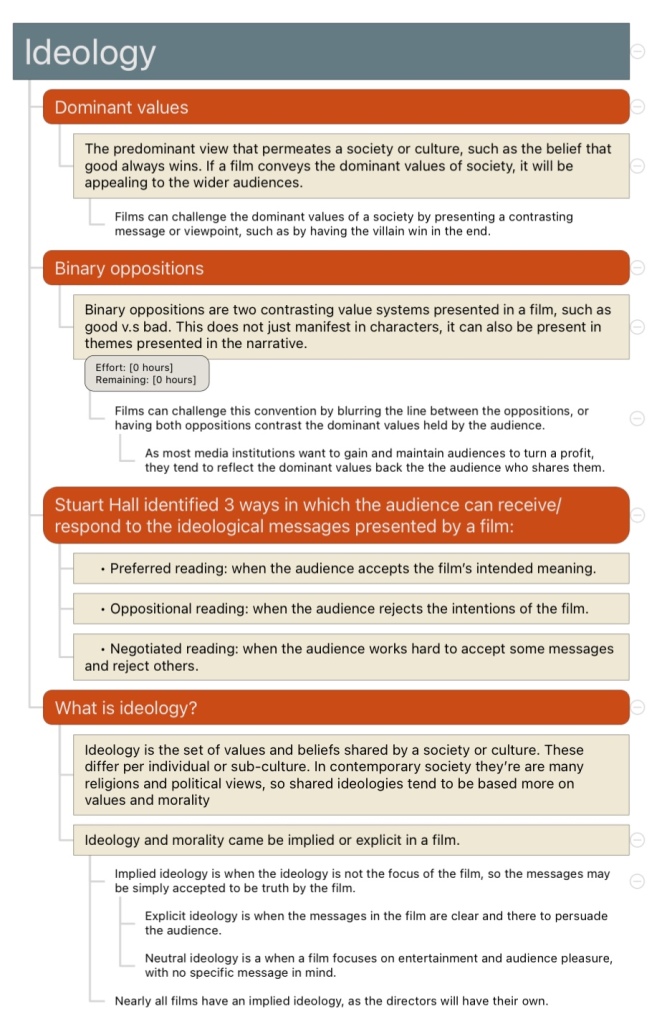
Ideology Visualised

Finley Cairns A-Level Film Studies Blog
I Love Film. Tarantino mostly.

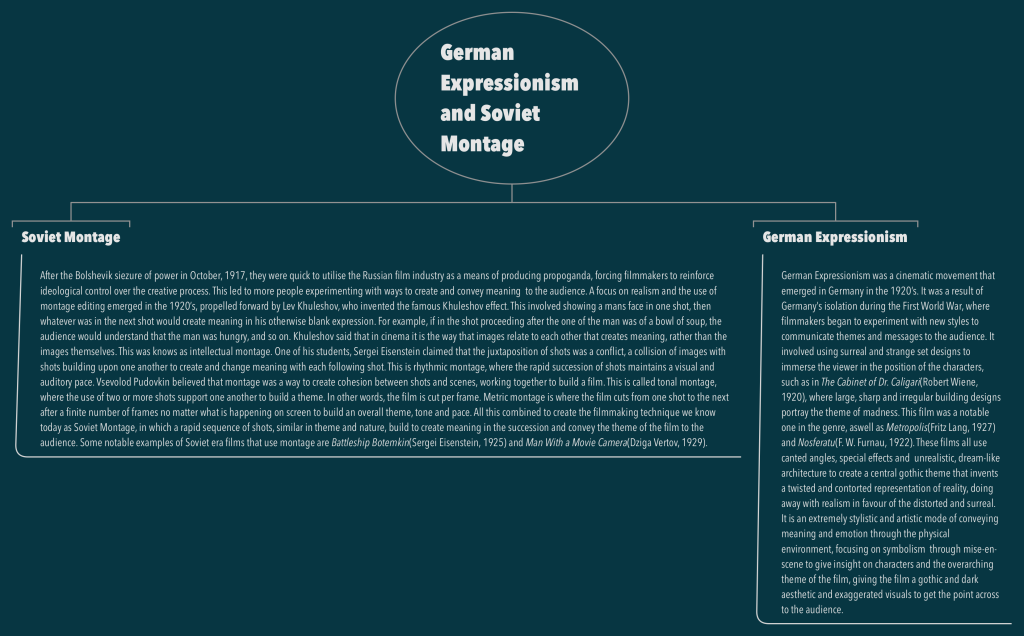
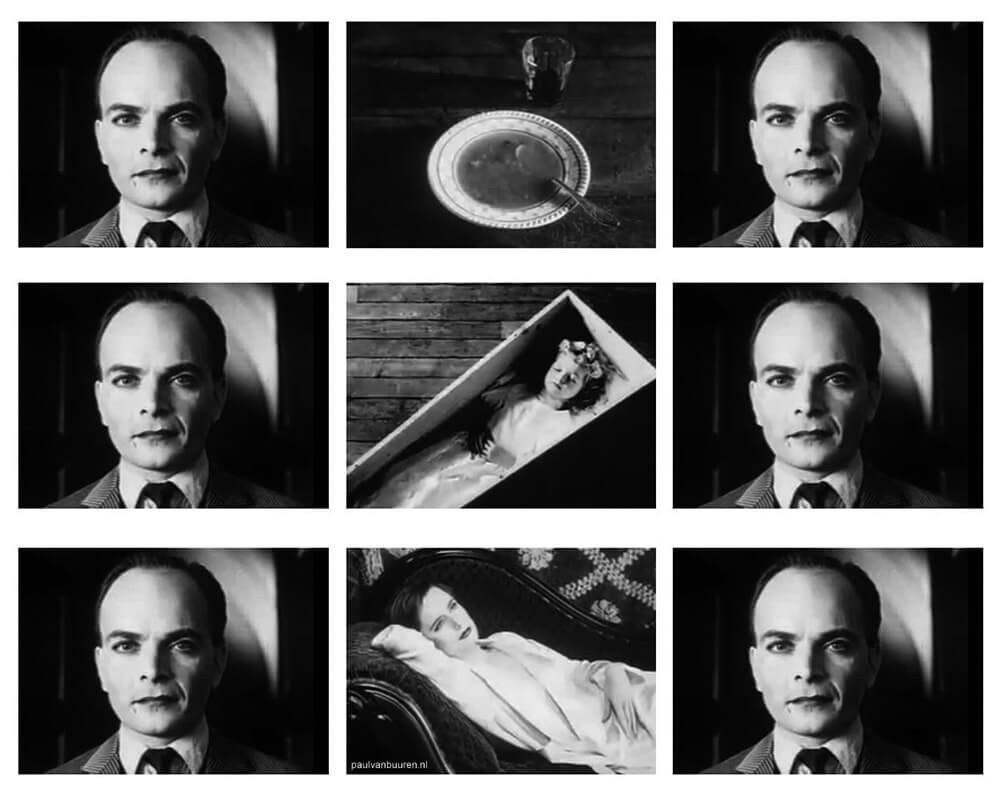
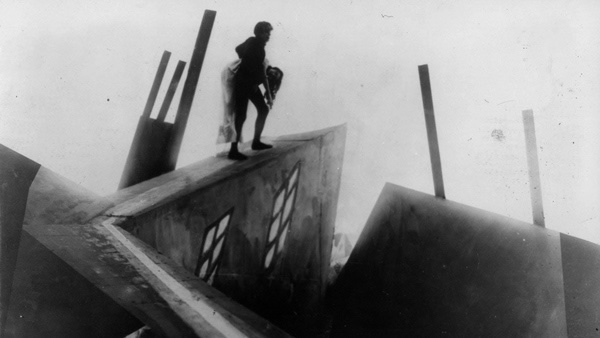
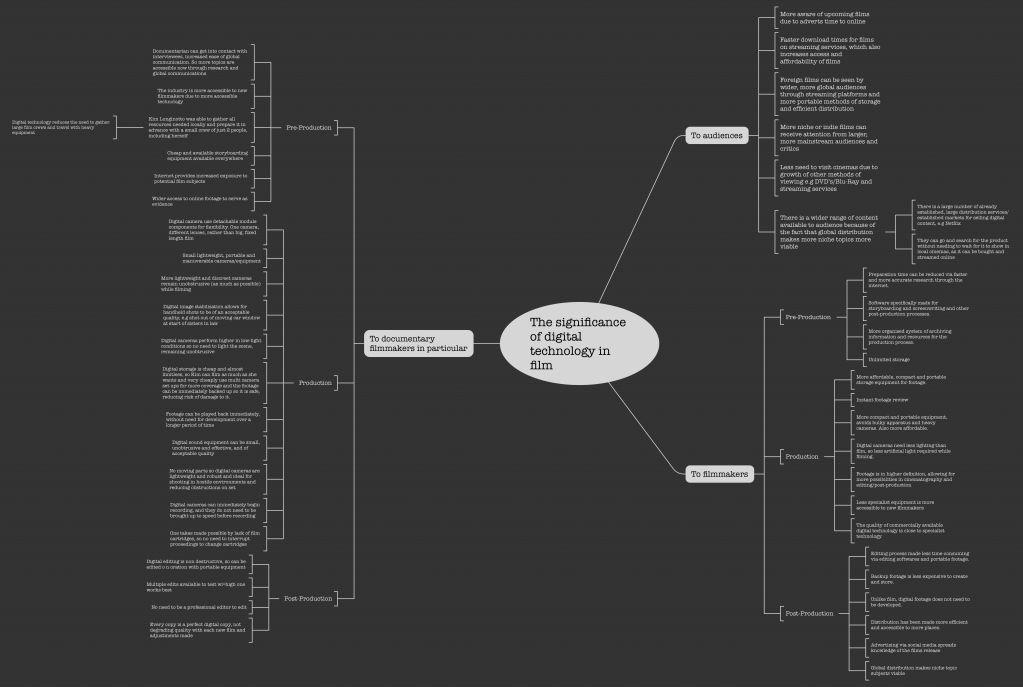
This mind map displays the significance of digital technology in film. It is clear that there are plenty of arguments that digital technology has made the planning, production and distributaries of films more efficient and manageable for filmmakers, replacing film as a more effective and accessible mode of film production.
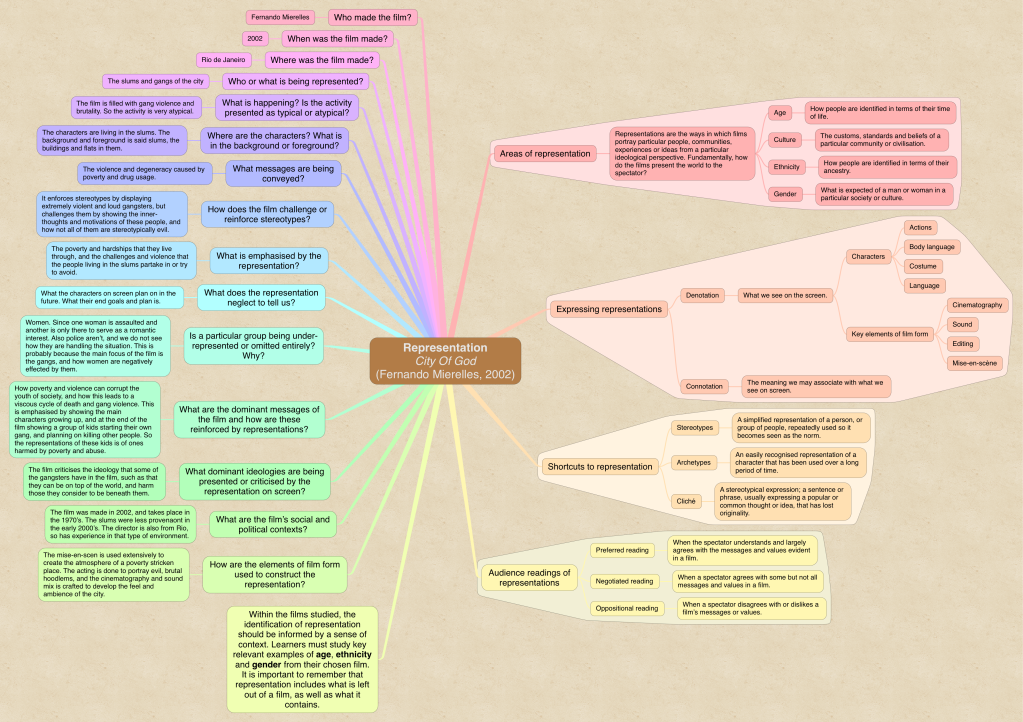
Here is the same mind map with the questions on the left answered. The questions were about representation in the film, The City Of God, and involved things like how the gangsters were portrayed, and who was not represented in the f ilm enough, and why.
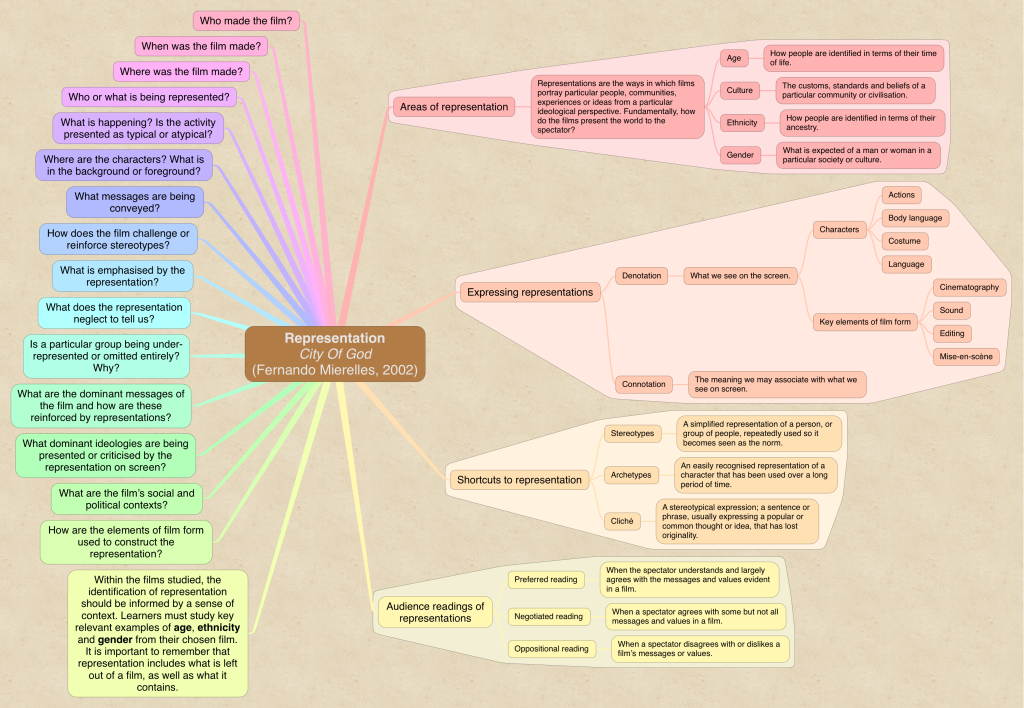
This mind map shows the different aspects of representation in film. These involve how people or groups of people are portrayed in film, there is areas of representation, expressing representations, shortcuts to representation, and audience readings of representation.
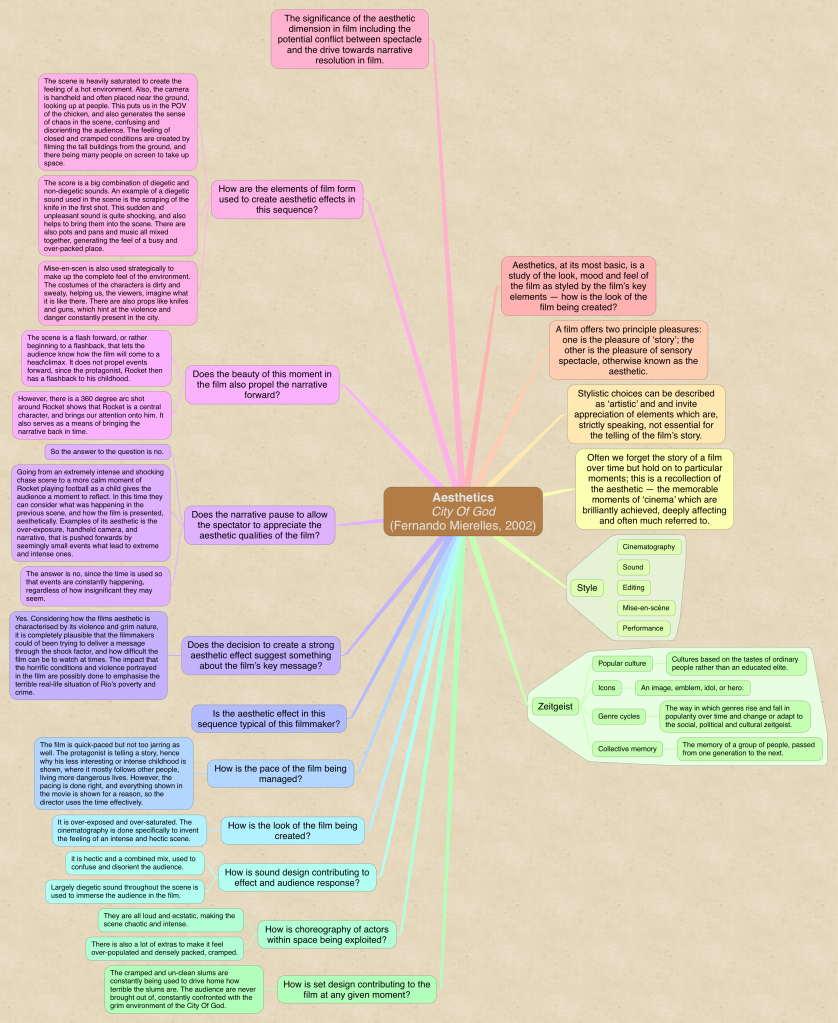
This mind map was updated by me. Now all of the questions have been answered on the left hand side. It explains how aesthetics are used in The City Of God, and what effects they have on the audience and the overall film, particularly looking at those used in the opening chase sequence, such as over-exposure, handheld camera usage, and placing the camera low to the ground.
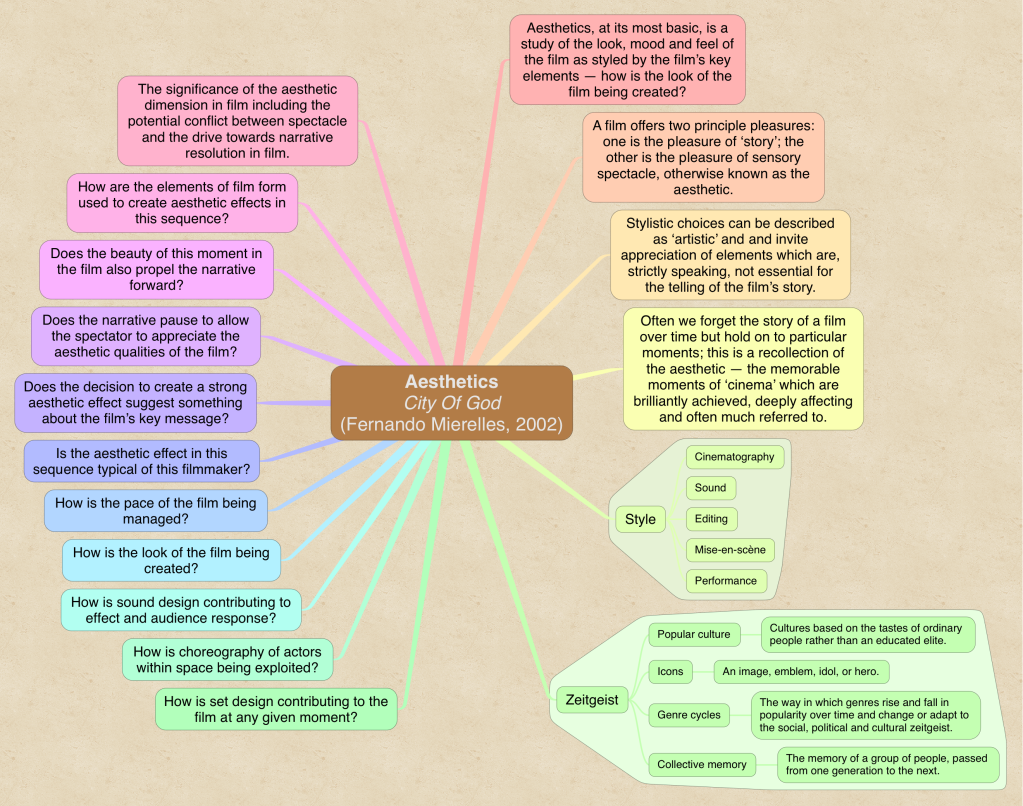
For this task we looked at the core study area of aesthetics in film. These are style and zeitgeist. The mind map also covers the meaning of aesthetic in film, and how it may impact the audience.
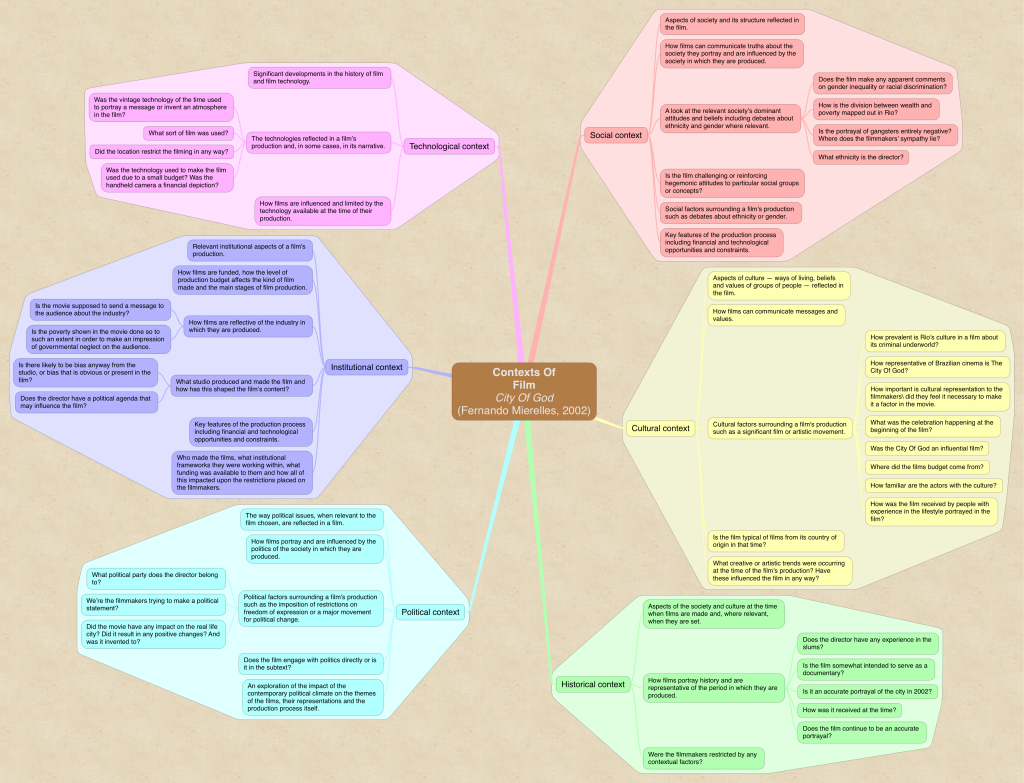
This mind map shows the various different contexts that a film can be made in. There is institution, political, historical, social, and cultural. The mind map also includes the questions that one would ask to gain a complete understanding of the film, The City Of God.
“Social Definition: How films can communicate truths about the society they portray and are influenced by the society in which they are produced. For example: Sorry We Missed You (Ken Loach, 2019) explores the contemporary problems of zero-hour contracts and poverty. For example: The Breakfast Club (John Hughes, 1985) contains casual racism and homophobia that was common in teen comedies of the 1980s.”
“Historical Definition: How films portray history and are representative of the period in which they are produced. For example: Dunkirk (Christopher Nolan, 2017) explores from a modern perspective the experiences of soldiers retreating from an approaching army in the Second World War.”
“Political Definition: How films portray and are influenced by the politics of the society in which they are produced. For example: The Hurt Locker (Katheryn Bigelow, 2009) questions the role of American soldiers in combat.”
“Technological Definition: How films are influenced and limited by the technology available at the time of their production. For example: the increasing use of CGI, 3G and IMAX in films at the beginning of the 21st Century.”
“Institutional Definition: How films are reflective of the industry in which they were produced. For example: the highly stylised 1960s Hammer Horrors and the superhero focus of Marvel studios.”

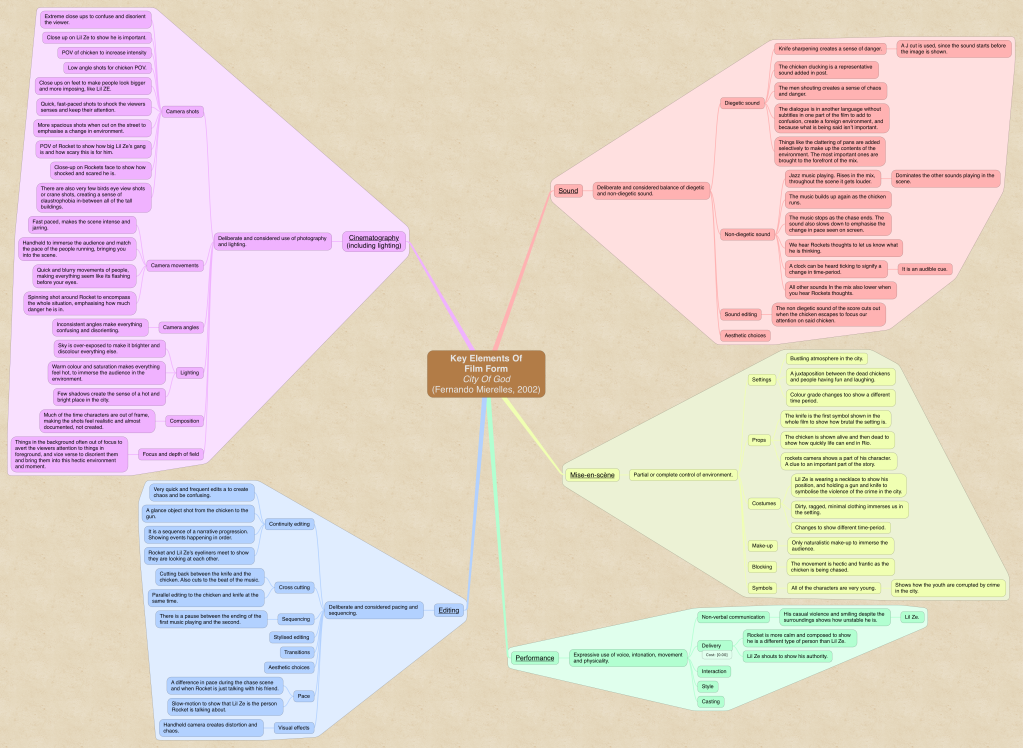
This mind map covers the key elements of the form of the film The City Of God. It shows different aspects of its editing, sound, cinematography, performances, and mise-en-scen.
We recently created a mind map in I-Thoughts of the key elements of film form. This involved 5 categories, cinematography, sound, editing, mise-en-scen and performance. In these separate categories we covered the more minute details, like different methods of editing, camera shots and movements, types of sound and performance methods, and even the things that miss-en-scen entailed. We covered every detail and put them into the correct sections on the mind map.

I understand that in component 1 we are looking at varieties of film and film making. Component 1a is Hollywood from 1930 to 1990. Here we will be analysing films like Casablanca and Bonnie & Clyde. In component 1b we are doing U.S film since 2005. Here we analyse 2 of 4 films, including no country for old men and la la land. In component 1c we cover British films since 2005,like trainspotting and this is England.
Component 2 is global filmmaking perspectives. 2a is global film, where we look at one film in Europe(pans labyrinth), and one of two from outside of Europe. 2b is documentary film, where we look at sisters in law. 2c is silent cinema, and here we can choose one of 4 movies to analyse for our answer. 2d is experimental film from 1960-2000.
Finally, in component 3, we write, produce, and direct our own short film.

You must be logged in to post a comment.